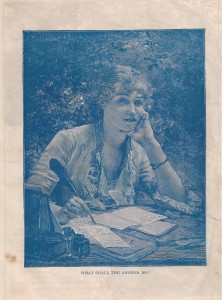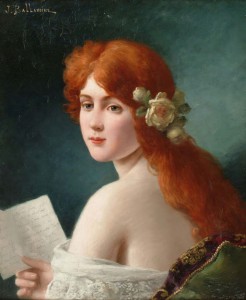It is amazing to me the beautiful results that can be created with parallel lines, when it’s done by a talented person. I’m not sure exactly how the old “etching” and engraving process worked, but the images found in older books, magazines, and newspapers  employed the process until technology provided a way to reproduce photographs. The parallel line technique is still employed in some of the Wall Street Journal’s pages.
employed the process until technology provided a way to reproduce photographs. The parallel line technique is still employed in some of the Wall Street Journal’s pages.
Unfortunately, the advent of new technology caused quality to suffer even if the quantity of printed pictures greatly increased. Newspapers used to use a dot process they called “half-tones.” Details were tossed out with the space between the dots.
It’s a beautiful thing here at the bookstore when the lunchtime dishes are washed, giving me time to tackle the office mess (again). An organized, clean, and efficient back-office would be a great thing, I’m thinking. But my space tends to be more like some people’s garages – so full of this and that – that no room remains to park the car.
While moving this and that to here and there, I ran across a grouping of pages containing some poetry and some engravings. A little research revealed that the pages are from an 1885 issue of The Magazine of Art.
According to Wikipedia:
The Magazine of Art was an illustrated monthly British journal devoted to the visual arts, published from May 1878 to July 1904 in London and New York by Cassell, Petter, Galpin & Co. It included reviews of exhibitions, articles about artists and all branches of the visual arts, as well as some poetry, and was lavishly illustrated by leading engravers of the period such as William Biscombe Gardner.
The engraving I’ve included is by an artist named Jules Frederic Ballavoine, who lived from 1855 to 1901, and received his formal art training at the L’Ecole de Beaux-Arts under historical painter Isidore Alexandre Augustin Pils (1813-1875). Ballavoine exhibited widely across Europe and won medals in a number of juried exhibitions. His works are held by both museums and private collectors.
He was a young man of thirty when he finished the woman penning the note – an expressive work that doesn’t translate well to the computer age. In fact, I tried to reduce the size of the image, but the computer algorithm used to shrink a picture has trouble with the narrow parallel lines. They come out sort of drunken-looking.
So I hope whatever device you’re using will allow you to click on the image for a closer look at the style of artwork that appeared during the days of your great-great-granny. (Add as many greats as required.) The second image is an example of Ballavoine’s oil on canvas work.
In this day when a “selfie” can be snapped and posted within minutes, it is almost unimaginable the amount of work that went into sharing an image with others back in the day.
My neighbor Alisa at Your Design (in the Rose District) can frame your etchings and engravings quite beautifully, and you’ll find a section of books on art and artists here at the shop, so –
Come visit!
McHuston
Booksellers & Irish Bistro
Rose District
122 South Main St. Broken Arrow OK!
